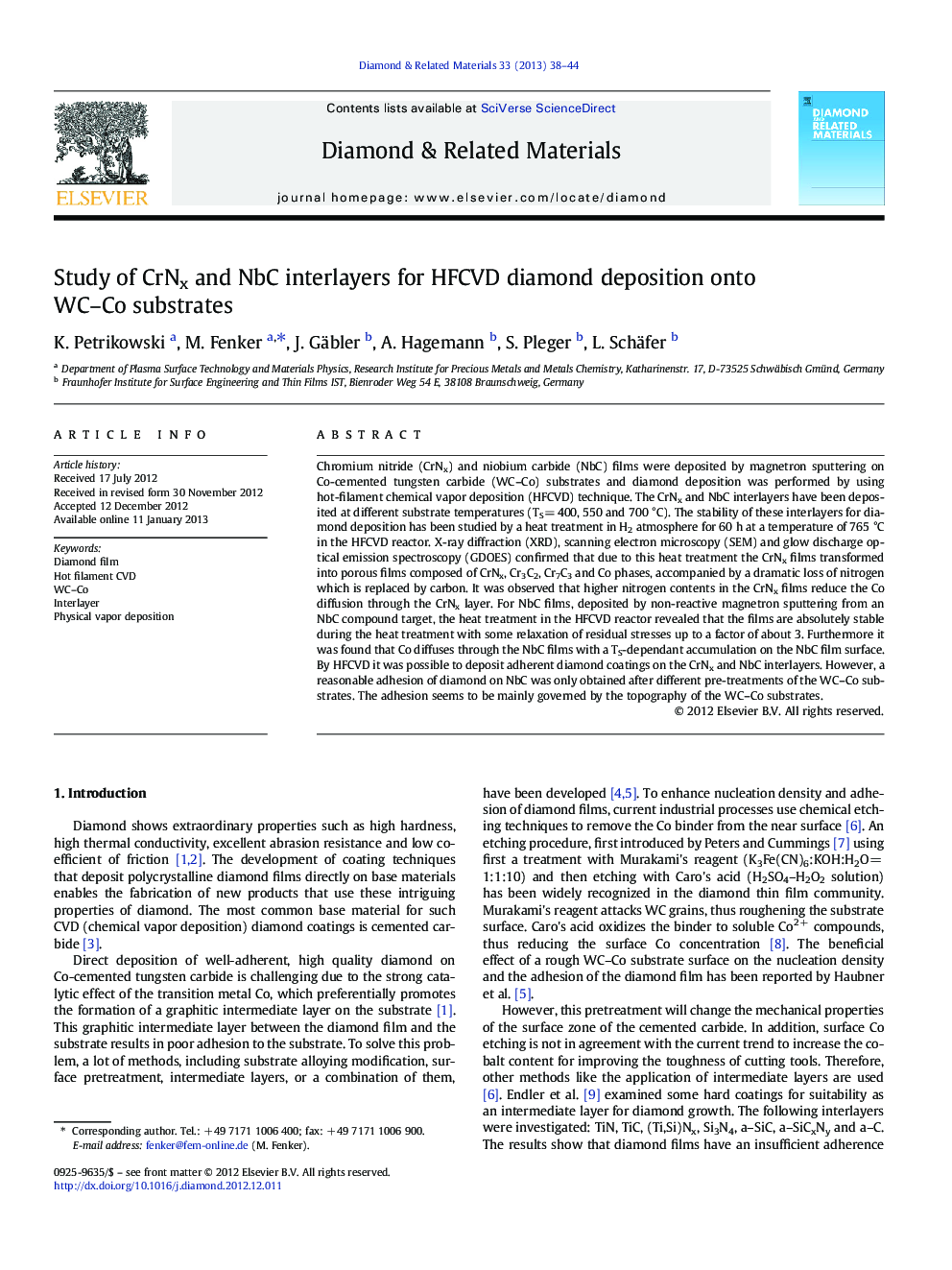| کد مقاله | کد نشریه | سال انتشار | مقاله انگلیسی | نسخه تمام متن |
|---|---|---|---|---|
| 701825 | 1460798 | 2013 | 7 صفحه PDF | دانلود رایگان |

Chromium nitride (CrNx) and niobium carbide (NbC) films were deposited by magnetron sputtering on Co-cemented tungsten carbide (WC–Co) substrates and diamond deposition was performed by using hot-filament chemical vapor deposition (HFCVD) technique. The CrNx and NbC interlayers have been deposited at different substrate temperatures (TS = 400, 550 and 700 °C). The stability of these interlayers for diamond deposition has been studied by a heat treatment in H2 atmosphere for 60 h at a temperature of 765 °C in the HFCVD reactor. X-ray diffraction (XRD), scanning electron microscopy (SEM) and glow discharge optical emission spectroscopy (GDOES) confirmed that due to this heat treatment the CrNx films transformed into porous films composed of CrNx, Cr3C2, Cr7C3 and Co phases, accompanied by a dramatic loss of nitrogen which is replaced by carbon. It was observed that higher nitrogen contents in the CrNx films reduce the Co diffusion through the CrNx layer. For NbC films, deposited by non-reactive magnetron sputtering from an NbC compound target, the heat treatment in the HFCVD reactor revealed that the films are absolutely stable during the heat treatment with some relaxation of residual stresses up to a factor of about 3. Furthermore it was found that Co diffuses through the NbC films with a TS-dependant accumulation on the NbC film surface. By HFCVD it was possible to deposit adherent diamond coatings on the CrNx and NbC interlayers. However, a reasonable adhesion of diamond on NbC was only obtained after different pre-treatments of the WC–Co substrates. The adhesion seems to be mainly governed by the topography of the WC–Co substrates.
► A hydrogen heat treatment showed that the NbC interlayer is stable.
► Whereas the CrNx layer is transformed into a sponge-like structure
► Co diffusion occurred for both interlayers.
► Adherent diamond coatings were deposited on the CrNx and NbC interlayers.
Journal: Diamond and Related Materials - Volume 33, March 2013, Pages 38–44